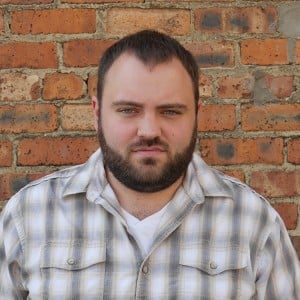Dallas Neighborhood Histories, This Week on “Frame of Mind”
ArtandSeek.net
December 22, 2015
22
While he says he can be described as a ‘recovering architect,’ Craig Weflen attended the University of Nebraska and received his bachelor’s and master’s degrees in Architecture and Design. Weflen then moved to Texas to work for bcWORKSHOP, where he made the transition from architecture and design to film. This week, I talk to Weflen about his documentary, “Bonton + Ideal.”
For the last episode of season two on “Frame of Mind,” a look into the history of Bonton and Ideal, two neighborhoods in South Dallas. “Bonton + Ideal” takes us into how segregation, weather, people and so much more can shape and bring an identity to a community.

Photo of the Ingram Family and their home in “Bonton + Ideal”
On the purpose of bc workshop…
CWWe’re a nonprofit architecture and design center that has a focus on bringing design resources to areas of the city where design resources aren’t typically utilized. As the organization has evolved over its life cycle, we’ve expanded into different areas and different ways of thinking outside of traditional architecture groups. We’ve got a group within the organization that does data analytics, we’ve got a team that is working with policy makers, and then there’s the bc media team which is making films like “Bonton + Ideal”. The mission is about building better and more equitable cities, and to do that, you’ve got to have an understanding of the people who live there, and neighborhoods are the most fundamental way people organize themselves in the city
On the research conducted for “Bonton + Ideal…”
CWThis film is part of a larger series — our “
Neighborhood Stories” project. We have a process for doing this type of research. We start by doing as much research as we can on our own; we’re gathering that outsider’s perspective, and that’s reading through newspaper archives, everything we can find at the library, image archives — all of that kind of stuff. The next step, which is the most important piece of this process, is actually talking with folks. The interviews that you see in the film are the biggest part of the research process itself, because when you’re telling stories about a neighborhood’s history, there’s not always a well documented history, a lot of that is orally preserved. It’s family history and stories that have been passed down from generation to generation, and you can’t learn any of that stuff without talking to folks. The mindset is to tell the neighborhood’s story; that’s the primary objective of all of this. From there, you’re able to examine some of the historical forces that have shaped our cities through the lens of a specific neighborhood, and you start to see the impact those forces have had on the people who live there.
On the importance of telling stories…
CWIt’s the history of Dallas, and you want to have an appreciation for the city that you live in beyond this rosy history that everyone knows and talks about. A lot of these neighborhood-focused stories aren’t necessarily the most pleasant things to talk about, but it’s important that we recognize these things that have happened in our city as we look forward to building a better Dallas. The other part of this story is that while Bonton and Ideal are certainly unique neighborhoods that have a special character and sense of place, the challenges they have faces have also been faced by other neighborhoods — not just across Dallas, but across the whole American South. You talk about freeways dividing a neighborhood, flooding concerns in formerly segregated neighborhoods and bombings by racially motivated groups — these are things that have happened elsewhere in the country and have played a big part in shaping these communities.

Filmmaker Craig Weflen
On the most important part of a community…
CWIt’s interesting because that’s a question we always ask when we conduct interviews, “What makes this neighborhood special?” For both Bonton and Ideal, – every person that we asked – said “the people” — the people and the close social ties developed in the neighborhood. I think that’s probably a result of the outside forces that have made moves to isolate the community physically, socially and economically. The folks were forced to rely on each other during the time of segregation when you couldn’t shop anywhere outside of your neighborhood. When that went away, those social ties still remained, and they grow stronger from generation to generation. It’s a really close knit community.
On the highlights of the “Neighborhood Stories” series…
CWI got to meet a lot of people that are really committed to making their neighborhood a great place to live and are really passionate and driven — it’s incredible. I’ve gotten to meet some really incredible people and help to tell their story and provide them with something that can hopefully help them to leverage things to go forward. It’s very rewarding.
Thoughts on being featured on “Frame of Mind…”
CWI’m really excited about it! I think it’s a really fantastic opportunity that KERA provides to help elevate different voices that are striving to tell different and unique stories. We definitely feel excited to have our films on “Frame of Mind.”












